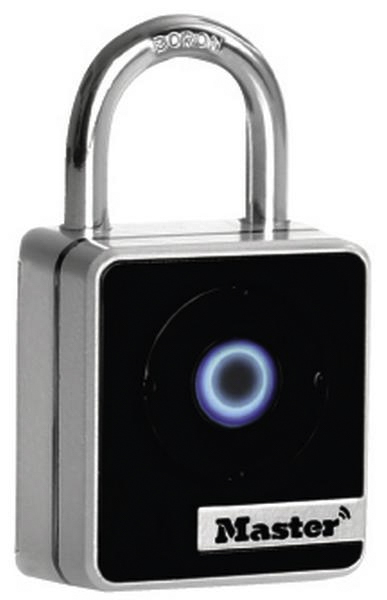Padlocks for Wet and Dry Areas
September 26, 2024
Padlocks are essential security tools. They come in various types, suitable for different environments. This article explores the wide range of padlocks supplied with or without keys. These locks are specifically designed for both wet and dry areas.

Understanding Padlocks
What is a Padlock?
A padlock is a portable lock. It secures items by using a shackle that can be opened with a key or combination. Padlocks are versatile and can be used in many applications.
Types of padlocks
Padlocks can be classified into several categories. These include keyed, combination, and smart locks. Each type serves different needs and preferences.
Keyed Padlocks
Traditional Keyed padlocks
Traditional keyed locks are widely used. They work using a physical key. Users insert the key into the lock and turn it to open.
Advantages of Keyed padlocks
Keyed locks offer several advantages. They are straightforward and reliable. Additionally, they come in various sizes and materials. This makes them suitable for different security needs.
Disadvantages of Keyed locks
However, there are drawbacks. Losing the key can lock users out. Furthermore, keys can be duplicated, which poses a security risk.
Combination padlocks
What are Combination locks?
Combination locks use a numerical code instead of a key. Users dial the correct numbers to unlock them. This feature adds convenience.
Benefits of Combination locks
Combination locks have several benefits. They remove the need for keys, reducing the chance of being locked out. Additionally, they often have more secure locking mechanisms.
Limitations of Combination locks
Despite their advantages, combination locks can also have downsides. Users must remember the combination. Forgetting it can lead to access issues.
Smart Padlocks
Introduction to Smart locks
Smart padlocks represent the latest technology in security. They connect to smartphones via Bluetooth or Wi-Fi. Users can lock or unlock them remotely.
Features of Smart locks
Smart locks often have advanced features, including customisable access permissions and activity logs. They can even send alerts to users.
Considerations for Smart locks
However, smart locks rely on technology. If the battery dies, they may not function. Additionally, users need to ensure they have a secure network.
Materials and Construction
Steel Padlocks
Steel locks are known for their durability. They are resistant to cutting and drilling. This makes them ideal for high-security needs.
Brass locks
Brass locks offer a blend of strength and corrosion resistance. They are suitable for wet environments. However, they may not be as strong as steel locks.
Plastic locks
Plastic locks are lightweight and often less expensive. They are suitable for low-security needs. Additionally, they are resistant to rust, making them ideal for wet areas.
Weather Resistance
Importance of Weather Resistance
Weather resistance is crucial for padlocks used outdoors. Exposure to moisture and elements can damage locks. Therefore, choosing the right padlock is essential.
Corrosion-Resistant Padlocks
Corrosion-resistant padlocks are designed to withstand the elements. Therefore, they often have special coatings or materials that resist rust. This feature ensures longevity in wet areas.
Applications of Padlocks
Home Security
Padlocks can enhance home security. They secure gates, sheds, and other access points. This added layer of protection deters intruders.
Commercial Use
Businesses use padlocks for various purposes. They secure storage units, equipment, and vehicles. Reliable locks ensure that valuable assets remain protected.
Industrial Applications
In industrial settings, locks are essential. They secure machinery, tools, and hazardous materials. Choosing the right lock can improve workplace safety.
Recreational Uses
Padlocks also find applications in recreational settings. They secure lockers at gyms and sports facilities. Additionally, they protect bicycles and outdoor equipment.
Choosing the Right Padlock
Factors to Consider
When selecting a padlock, several factors should be considered. These include security level, environment, and usage frequency.
Security Level
The security level needed will vary. For high-risk areas, a robust steel lock is ideal. For lighter applications, a plastic lock suffice.
Environment
Consider the environment where the lock will be used. For wet areas, corrosion-resistant materials are essential. In dry areas, standard materials may work well.
Frequency of Use
If frequent access is required, a combination or smart lock may be best. For less frequent use, a traditional keyed lock might be more appropriate.
Maintenance Tips
Regular Inspection
Regularly inspecting padlocks is crucial. Look for signs of wear, rust, or damage. Addressing issues promptly can prolong the lock’s lifespan.
Lubrication
Lubricating the lock mechanism helps it function smoothly. Use a suitable lubricant to prevent sticking or jamming. This maintenance step is vital for long-term performance.
Storage
When not in use, store padlocks in a dry place. This helps prevent rust and damage. Consequently, a lock is used in a wet area; ensure it dries before storage.
Conclusion
Padlocks are versatile security solutions. They come in various types, each suitable for different environments. Whether keyed, combination, or smart, there are options for every need. By understanding the materials, applications, and maintenance, users can choose the right lock for their specific requirements. Ultimately, the right lock enhances security, providing peace of mind in both wet and dry areas.
Discover more from Blog Total Locker Service
Subscribe to get the latest posts sent to your email.